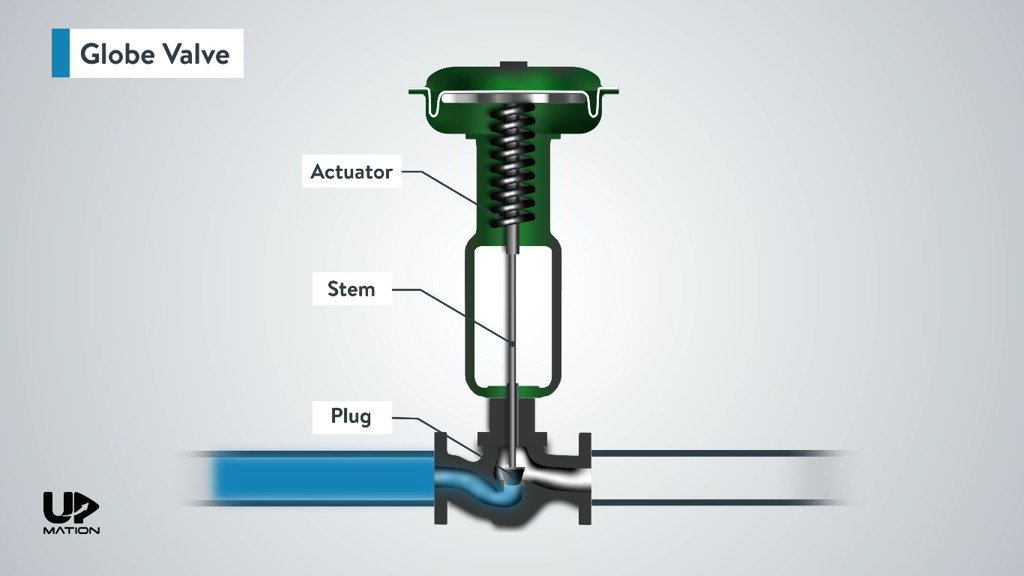Reliable Control Valves: Secret Parts for Efficient System Monitoring
Reliable Control Valves: Secret Parts for Efficient System Monitoring
Blog Article
Achieve Seamless Integration and Control With Top Quality Structure Automation Controls
In the realm of modern structure monitoring, the importance of top quality structure automation controls can not be overstated. As technology proceeds to breakthrough, the assimilation and control of different systems within a building have progressed to be more innovative and efficient. The smooth procedure and tracking of lighting, COOLING AND HEATING, security, and various other structure functions have actually ended up being paramount for boosting occupant convenience, energy performance, and overall functional performance. Nonetheless, the trip towards accomplishing true combination and control is a complex one, with considerations varying from system compatibility to cybersecurity. Embracing high quality structure automation controls is not merely a matter of benefit yet a calculated critical for organizations intending to maximize their facilities' performance and sustainability.

Advancement of Structure Automation Controls
Throughout the past few decades, the advancement of developing automation controls has actually significantly changed the method structures are handled and operated. At first, constructing automation systems mostly concentrated on fundamental features such as controlling ventilation, home heating, and air conditioning (A/C) systems. Nevertheless, as technology advanced, these controls have actually ended up being extra sophisticated, enabling for a wider series of structure systems to be incorporated and managed centrally.
The evolution of building automation controls has seen a change in the direction of more smart systems that can adjust to transforming conditions in real-time. This versatility is important for enhancing power effectiveness and ensuring resident convenience. Additionally, modern building automation controls now provide functions such as anticipating upkeep, remote surveillance, and information analytics, making it possible for center managers to make data-driven decisions to improve building performance.

Advantages of Top Quality Integration
The advancement in building automation manages in the direction of more intelligent systems has highlighted the substantial benefits of high quality assimilation in maximizing building operations and improving general performance. This centralized control likewise supplies much better exposure and understandings right into structure efficiency, making it possible for positive upkeep and optimization strategies. Overall, the benefits of quality integration in building automation controls are indisputable, using enhanced effectiveness, convenience, and functional performance.
Boosted Customer Experience and Availability
Enhancing customer communication with structure automation controls via user-friendly style and boosted availability raises the total experience for owners and facility managers alike. By concentrating on user experience, constructing automation systems can end up being a lot more straightforward and reliable. Intuitive interfaces, clear navigating, and personalized settings empower customers to connect with the controls easily and effectively.
Ease of access attributes play a vital function in making sure that all people, consisting of those with disabilities, can use the structure automation controls effortlessly. Integrating features such as voice commands, tactile switches, and color-contrasted display screens can improve ease of access and make the controls a lot more comprehensive.
Additionally, enhanced individual experience causes greater customer complete satisfaction, raised productivity, and have a peek here much better decision-making. Occupants can readjust environmental settings according to their preferences, while facility managers can effectively handle and keep an eye on structure systems - control valves. In general, focusing on individual experience and accessibility in building automation controls adds to a more seamless and effective structure setting for all stakeholders included
Sustainable Practices Through Automation

Furthermore, automation can assist in the assimilation of renewable resource sources such as solar panels or wind turbines into building operations. By immediately changing power usage based on the schedule of renewable resource, structures can additionally reduce their dependence on non-renewable click here to find out more sources. This smooth combination of lasting practices not only benefits the setting however additionally boosts the overall functional effectiveness and cost-effectiveness of the structure. Through automation, buildings can align with contemporary sustainability goals and add to a greener future.
Future Trends in Structure Control Equipment
One famous pattern forming the future of building control systems is the enhanced integration of Artificial Intelligence (AI) and equipment learning. Additionally, the Web of Points (IoT) is transforming structure control systems by connecting gadgets and sensing units to improve operations and boost efficiency.
Another vital pattern is the emphasis on cybersecurity procedures to secure versus potential dangers to developing automation systems. As buildings end up being extra interconnected, guaranteeing robust cybersecurity methods will certainly be crucial to protect sensitive information and stop unapproved gain access to.
Additionally, the shift towards cloud-based systems is getting momentum, enabling centralized control and remote access to structure systems. This promotes easier monitoring, upkeep, and updates, improving the general performance and adaptability of structure control systems. As innovation remains to development, these fads are anticipated to shape the future landscape of building automation controls, driving technology and sustainability in the built environment.
Conclusion
Future patterns in building control systems are likely to concentrate on additional boosting automation abilities for boosted power efficiency and overall efficiency. It is crucial for structure proprietors and operators to focus on the fostering of high this contact form quality building automation manages to enhance structure procedures and achieve long-lasting sustainability objectives.
In the realm of contemporary structure monitoring, the importance of top quality structure automation controls can not be overemphasized. In general, the development of building automation regulates proceeds to drive innovation in the structure administration market, using new opportunities for developing smarter and more lasting structures.
The innovation in structure automation regulates towards more smart systems has emphasized the significant advantages of quality assimilation in optimizing structure operations and enhancing general efficiency. On the whole, focusing on customer experience and ease of access in building automation regulates adds to an extra productive and smooth building atmosphere for all stakeholders involved.
It is important for building owners and drivers to prioritize the fostering of high quality structure automation regulates to maximize structure procedures and attain long-term sustainability objectives. - control valves
Report this page